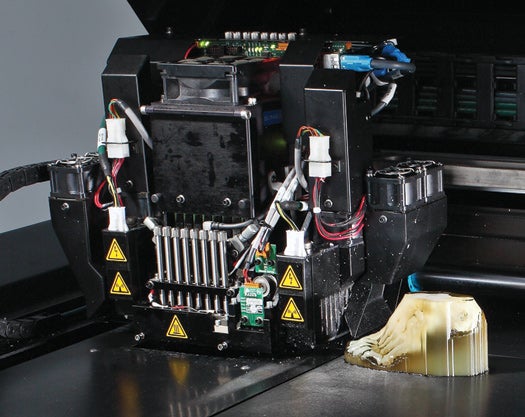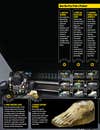How It Works: The Make-All 3-D Printer
The Objet Connex churns out complex objects by spraying eight million plastic droplets a second

Since the first 3-D printer was invented by Charles Hull in 1984, machines have seen vast improvements in speed and accuracy. Today’s best 3-D printers operate much like a standard inkjet, spraying millions of droplets of polymer to build an object layer by layer. But there’s a hitch: Most 3-D printers use only use a single material at once, thus each product they produce can be just one color or consistency.
The Objet Connex can print two materials at a time, and even mix composites. In doing so, it can craft items with varied flex, shade and feel. The Connex has helped hospitals fabricate see-through medical models and even allowed a Massachusetts Institute of Technology student to construct a working flute complete with moving hinges and rubber gaskets.

Illustrations by Aaron Newman; Flash Design by Josh Rashkin
More How It Works:
- A Smarter Crash-Test Dummy
- An Affordable Telephoto Lens
- 3-D TV Without Glasses
- World’s Fastest Roller Coaster
- An Implantable Bionic Eye
- The Make-All 3-D Printer
- Better Curve Control
- The Light-Driven Computer
This month’s How It Works section is brought to you by Digi-Key. All posts are purely editorial content, which we are pleased to present with the help of a sponsor; the sponsor has no input in the content itself.